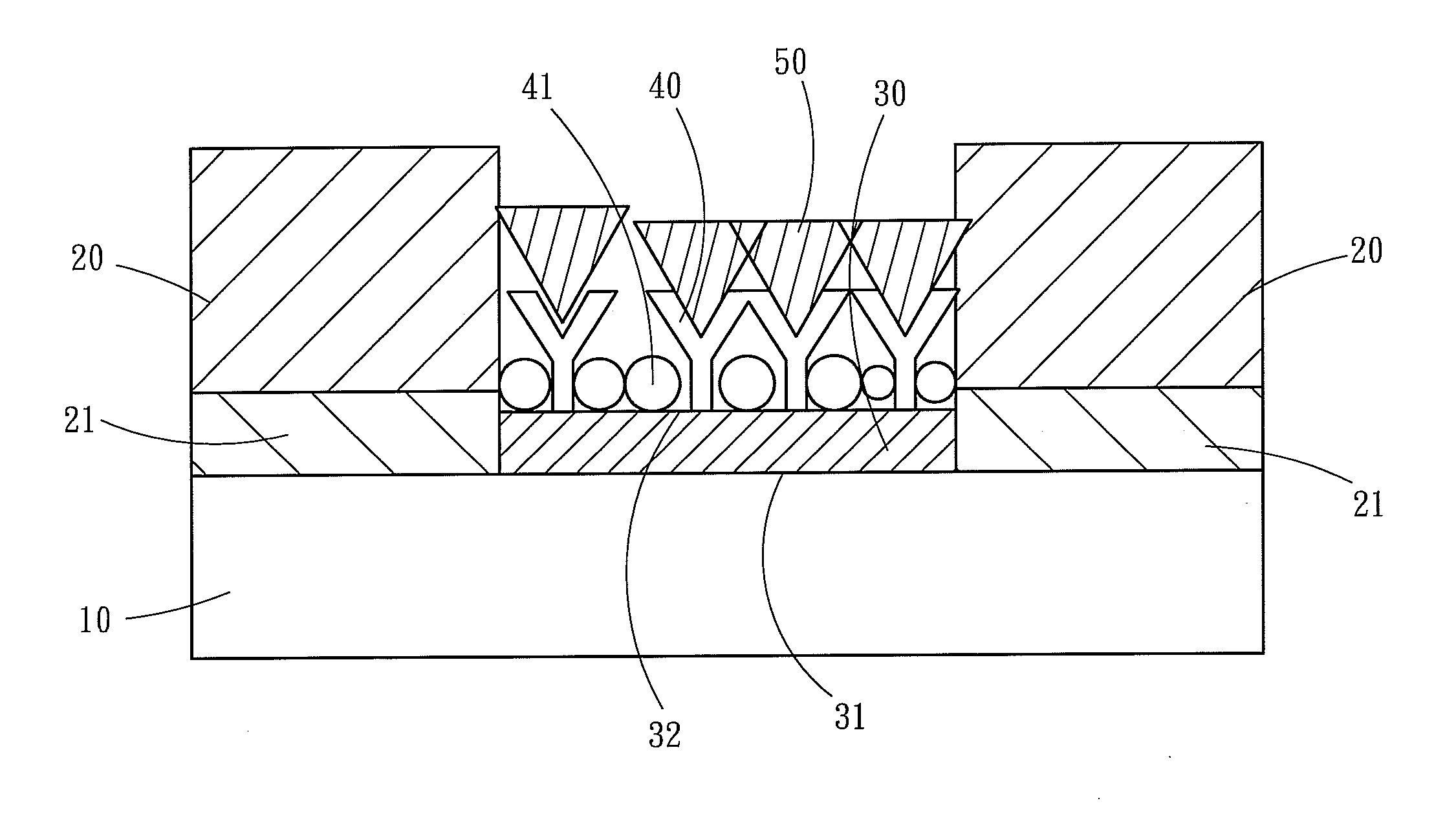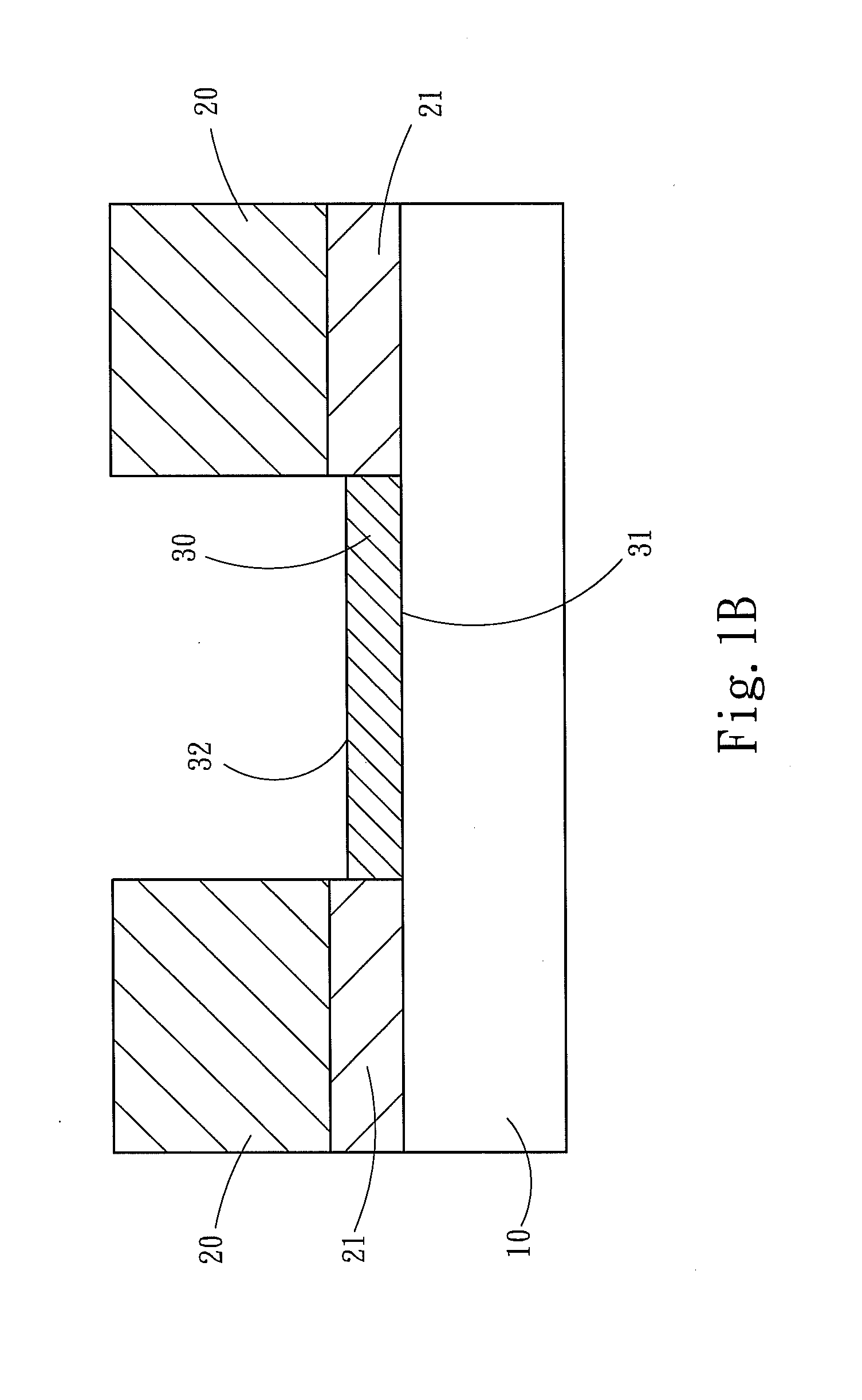Electric conductivity-based biosensor
- Summary
- Abstract
- Description
- Claims
- Application Information
AI Technical Summary
Benefits of technology
Problems solved by technology
Method used
Image
Examples
Embodiment Construction
[0010]The technical contents of the present invention are described in detail in cooperation with the drawings below. Refer to FIGS. 1A to 1E for a series of cross-sectional views showing the process of fabricating an electric conductivity-based biosensor according to one embodiment of the present invention. The biosensor of the present invention comprises a substrate 10, two electric-conduction electrodes 20, an antibody adhesion layer 30 and a plurality of antibodies 40. The two electric-conduction electrodes 20 are separately arranged on the substrate 10. The antibody adhesion layer 30 is arranged on a region of the substrate 10, which is between the two electric-conduction electrodes 20. The antibody adhesion layer 30 includes a first surface 31 contacting the substrate 10 and a second surface 32 opposite to the first surface 31. The plurality of antibodies 40 is arranged on the second surface 32 of the antibody adhesion layer 30 and connected with a plurality of tested objects ...
PUM
 Login to View More
Login to View More Abstract
Description
Claims
Application Information
 Login to View More
Login to View More - R&D
- Intellectual Property
- Life Sciences
- Materials
- Tech Scout
- Unparalleled Data Quality
- Higher Quality Content
- 60% Fewer Hallucinations
Browse by: Latest US Patents, China's latest patents, Technical Efficacy Thesaurus, Application Domain, Technology Topic, Popular Technical Reports.
© 2025 PatSnap. All rights reserved.Legal|Privacy policy|Modern Slavery Act Transparency Statement|Sitemap|About US| Contact US: help@patsnap.com



